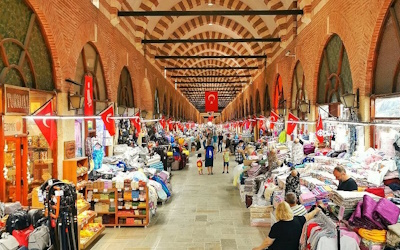
Ali Pasha Bazaar is a historic 16th-century market in Edirne, Turkey, built by Ottoman architect Mimar Sinan. Known for its arched corridors, it offers a range of shops selling textiles, jewelry, spices, and Turkish handicrafts, providing a lively glimpse into the city's cultural heritage.
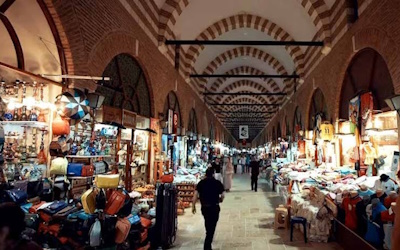
Selimiye Arasta Bazaar in Edirne, located near the iconic Selimiye Mosque, is a historic market dating back to the 16th century. It features a variety of shops selling traditional goods, such as textiles, jewelry, and handicrafts.
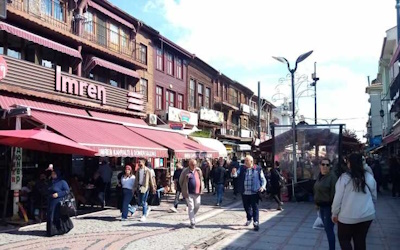
Saraçlar Street is the vibrant downtown of Edirne, bustling with shops, cafes, and historic architecture. This pedestrian-friendly avenue, lined with Ottoman-era buildings, is a popular spot for shopping, dining, and exploring the city's lively atmosphere.
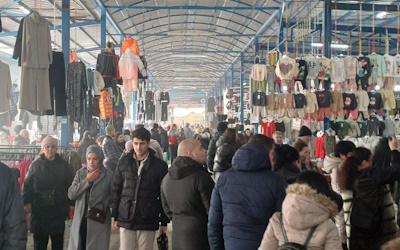
Ulus Bazaar is a bustling market in Edirne, open only on Fridays. Known for its wide range of goods, including fresh produce, textiles, and traditional Turkish items, it offers a unique shopping experience. The market’s lively atmosphere makes it a must-visit for those looking to experience local culture.
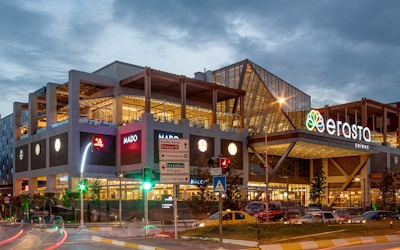
Erasta is a modern shopping mall in Edirne, offering a wide variety of stores, restaurants, and entertainment options. With its contemporary design and numerous retail brands, it’s a popular destination for both locals and tourists seeking a convenient and enjoyable shopping experience.
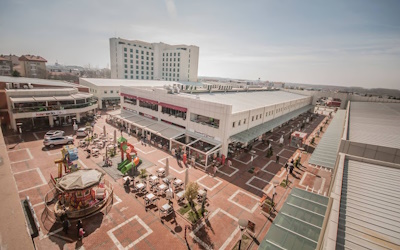
Margi shopping mall is a popular shopping destination in Edirne, offering discounted products from well-known brands. With a variety of clothing, accessories, and home goods, it’s a great place for bargain hunters looking for quality items at lower prices.
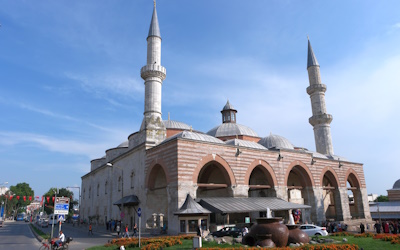
Old Mosque is a historical mosque built in the 15th century. Known for its stunning architecture, it features unique calligraphy and intricate tile work. Despite its age, the mosque remains an important religious and cultural landmark in Edirne.
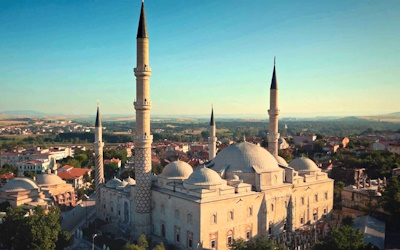
Three-Balcony Mosque in Edirne, built in the 15th century, is renowned for its unique minaret, which features three balconies, each with a different pattern. The mosque’s distinctive architecture, along with its beautiful calligraphy and design, makes it an important example of Ottoman-era religious structures.
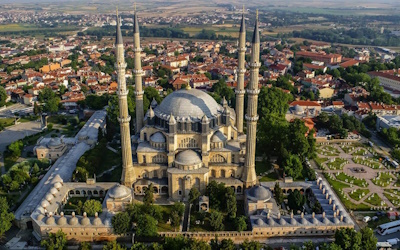
Selimiye Mosque in Edirne, built in the 16th century, is one of the most iconic examples of Ottoman architecture. Designed by the renowned architect Mimar Sinan, the mosque features a magnificent dome, four towering minarets, and intricate tile work. It is a UNESCO World Heritage site and stands as a symbol of the artistic and architectural grandeur of the Ottoman Empire.
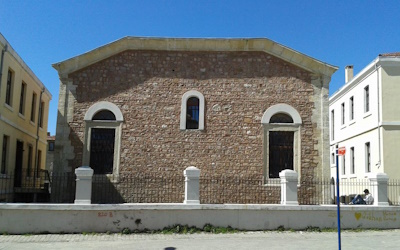
Italian Church in Edirne, built in 1852 by the Italian community, features a neo-Gothic architectural style. Known for its beautiful stained-glass windows and intricate design, it continues to serve as an important religious and cultural landmark for the Catholic community in the city.
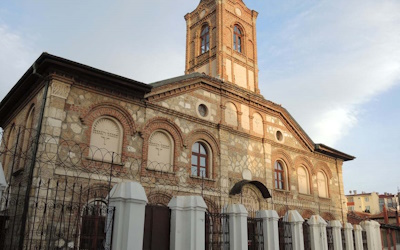
Sweti George Church in Edirne, built in the 19th century by the Bulgarian community, is dedicated to Saint George. It features traditional Byzantine-style architecture, beautiful frescoes, and intricate design details. The church continues to serve as an important religious site for the Orthodox Christian community in the city.
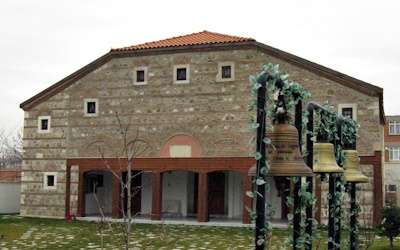
St. Constantin and Elena Church in Edirne was built by the Bulgarian community in 1869. This Eastern Orthodox church is known for its beautiful architecture, including striking frescoes and detailed iconography. It remains an important place of worship for the Orthodox Christian community in Edirne.
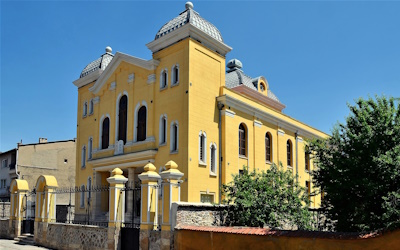
Grand Synagogue of Edirne was built in 1907 and is one of the largest synagogues in Turkey. After years of abandonment, it was restored and reopened in 2015. The synagogue features stunning architecture and stained-glass windows, serving as a symbol of Edirne's Jewish heritage.
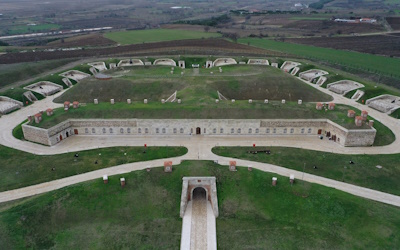
Balkan History Museum in Edirne highlights the history of the Turkish people in the Balkans, especially during the Ottoman era. The museum showcases exhibits on the Ottoman Empire, the Balkan Wars, and the cultural heritage of Turkish communities in the region. It offers a detailed look at the shared history and influence of the Turks in the Balkans.
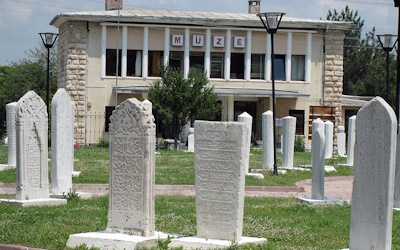
Archaeology and Ethnography Museum in Edirne, located near the Selimiye Mosque, showcases a rich collection of artifacts from various periods of Edirne’s history. The museum highlights archaeological finds from ancient civilizations, as well as ethnographic exhibits that reflect the local culture and traditions. It provides visitors with a deeper understanding of the region's cultural and historical evolution.
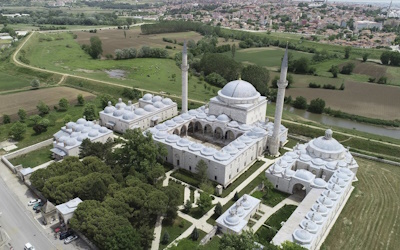
Bayezid Complex Health Museum in Edirne is located within the historic Bayezid II Complex, once an Ottoman-era health center. The museum showcases the history of medicine in the Ottoman Empire, featuring exhibits on traditional healing methods, medical instruments, and the medical practices of the time. It offers a fascinating insight into the development of healthcare and wellness during the Ottoman period.
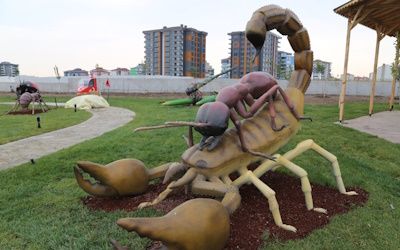
The Hasan Ali Yücel Children's Museum in Edirne focuses on interactive exhibits that engage children with themes like prehistoric life, including dinosaurs and the age of big bugs. The museum offers hands-on learning experiences, designed to spark curiosity about natural history, science, and the environment, making it a fun and educational destination for young visitors.
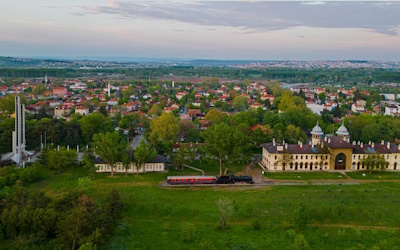
Karaağaç is a historic district in Edirne, home to significant landmarks like the Edirne Train Station, the Lozan Monument, and several museums, including the Karaağaç Train Station Museum, the Trakya University Nature History Museum, İlhan Koman Sculpture and Arts Museum, and the Museum of Turkish and Islamic Arts. These attractions are all located inside the train station, making it a rich cultural and historical area for visitors to explore.
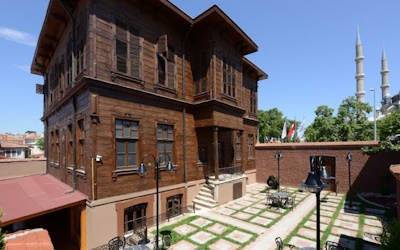
Edirne Kent Museum is dedicated to showcasing the city's history, culture, and urban development. Located in the heart of Edirne, the museum features exhibits on the city's architectural heritage, traditional crafts, and significant historical events. It offers visitors a comprehensive look at Edirne's evolution, from its Ottoman past to its modern-day significance.
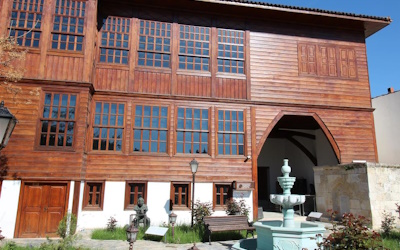
House of Necmi İğe, Ethnography Museum in Edirne is a historical house museum that displays the cultural and ethnographic heritage of the region. The museum is housed in a traditional Edirne house and features exhibits related to local customs, crafts, and daily life, as well as artifacts showcasing the city's rich history. It provides a unique glimpse into the cultural identity of Edirne and its people.
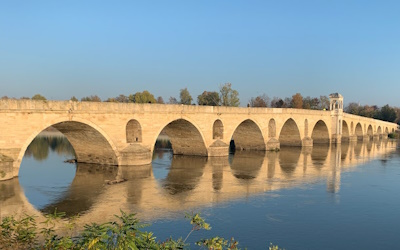
Tunca Bridge in Edirne was constructed in the 16th century by Ahmet Ağa, an architect during the reign of Sultan Suleiman the Magnificent. The bridge is known for its elegant design, featuring arches and sturdy stone construction. Spanning the Tunca River, it remains a significant historical and cultural landmark, offering scenic views of the surrounding area.
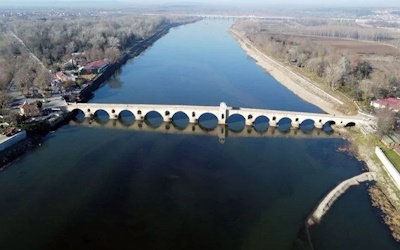
Meriç Bridge in Edirne was designed by the Ottoman architect Hacızade Edhem Efendi and completed between 1842 and 1847 during the reign of Sultan Abdülmecid. Known for its grand arches and robust stone construction, the bridge spans the Meriç River and stands as an important historical and architectural landmark in the city.
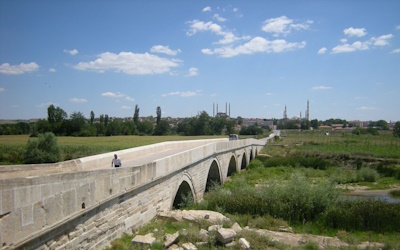
Yalnızgöz Bridge is a historic Ottoman bridge located in Edirne, built in the 16th century. The bridge spans the Tunca River and is known for its elegant design and sturdy stone construction. It features a single, wide arch and has been an important crossing point throughout history. Despite its age, the bridge remains an architectural landmark, offering beautiful views of the river and surrounding landscapes.
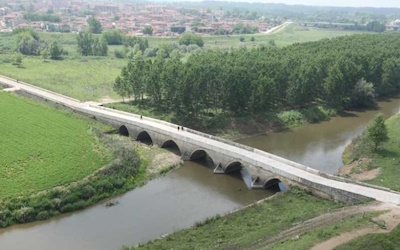
Beyazid II Bridge in Edirne is an Ottoman-era bridge that spans the Meriç River. Built during the reign of Sultan Beyazid II in the 15th century, the bridge is known for its solid stone construction and historical significance. The bridge features multiple arches and has played an important role in connecting the city and surrounding areas throughout history. It remains an important landmark and symbol of the region’s rich Ottoman heritage.
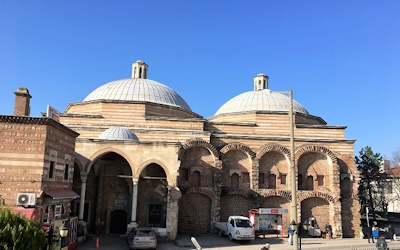
Sokullu Hamam in Edirne, built during the 16th century in the Ottoman style, is still in use today as a traditional Turkish bath. Visitors can enjoy its historic atmosphere while experiencing the rejuvenating services typical of a Turkish bath. Well-preserved and restored, it remains a popular destination for both locals and tourists, offering a unique opportunity to connect with Edirne's Ottoman heritage.
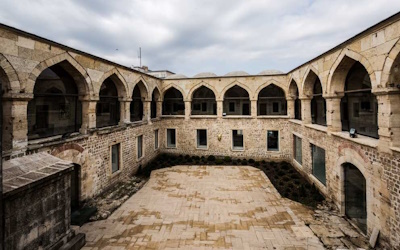
Deveci Han in Edirne is an Ottoman-era caravanserai built in the 16th century to accommodate travelers and merchants along trade routes. This historic structure features typical Ottoman architecture with a large, open courtyard and rooms for resting and trading. The caravanserai is known for its impressive stonework and robust design. Today, it stands as a significant cultural landmark, offering visitors a glimpse into the past.
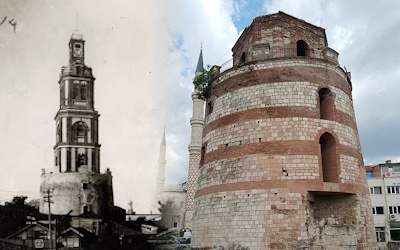
The Macedonian Clock Tower in Edirne was actually built in the 19th century, not the 20th century, during the later years of the Ottoman Empire. It was constructed in 1829, reflecting the architectural style of that time. The tower was built to commemorate the city’s connection to the Macedonian region.
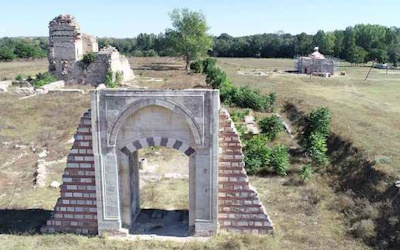
Sarây-ı Cedîd-i Âmire, or the New Palace, was built during Sultan Mahmud II's reign in the early 19th century. The palace complex included important structures like the Kum Kasrı Hamamı (Turkish bath), Matbah-ı Amine (royal kitchen), Babüssaade Kapısı (Imperial Entrance Gate), and Cihannüma Kasrı (Pavilion of the World). Though now in ruins, the site remains a valuable historical landmark, offering insight into the grandeur of the Ottoman Empire’s imperial life during that period.
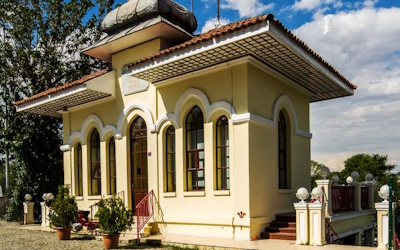
The Border Police Station, located near the Tunca River in Edirne, was once used as a police station during the Ottoman period. Today, it has been transformed into a charming café where visitors can relax and enjoy a drink while watching the river. The building still showcases traditional Ottoman architecture, making it a perfect spot to experience both the history and beauty of the area.
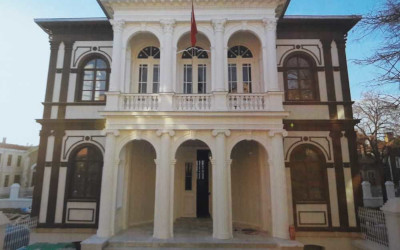
The Turkish State Music Society Building in Edirne serves as a cultural institution dedicated to the preservation and performance of Turkish classical music. It plays a key role in promoting traditional music and educating new generations of musicians.
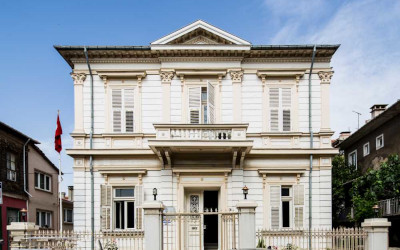
İlhan Koman, born in 1921 in Edirne, spent his early years in the city before becoming one of Turkey’s most influential sculptors. His childhood home in Edirne remains a symbol of his origins, reflecting the environment that shaped his artistic vision. While he later moved to Sweden and lived on the barge Hulda, his roots in Edirne played a key role in his creative journey.
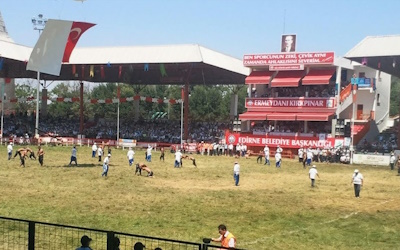
The Kırkpınar Arena hosts the Kırkpınar Oil Wrestling Tournament, one of Turkey’s oldest and most significant traditional sports events, dating back to 1362. Held annually in Edirne, wrestlers coated in olive oil compete in strength, skill, and endurance. The arena becomes the festival's focal point, attracting global crowds. Recognized by UNESCO, the event is a key symbol of Turkish cultural heritage.
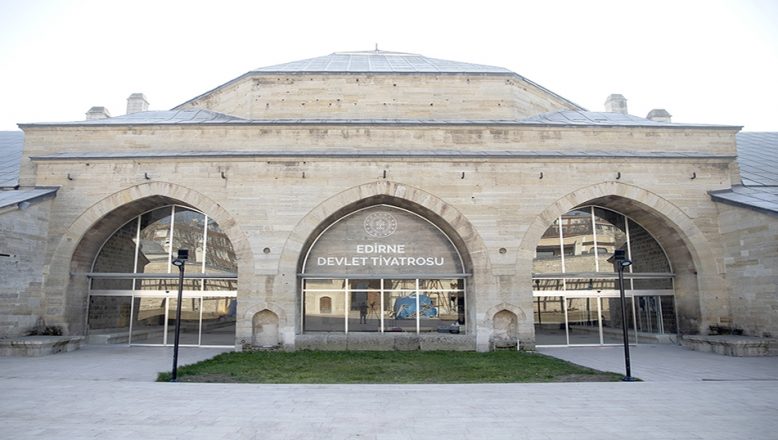
Edirne State Theatre is housed in a restored historical building that was originally the former Edirne Municipality Building. The building was carefully restored to preserve its architectural features while adapting it for its current use as a state theatre. This restoration has allowed the venue to blend historical charm with modern functionality, making it an important cultural and artistic landmark in Edirne. You can view the theatre schedule here.

